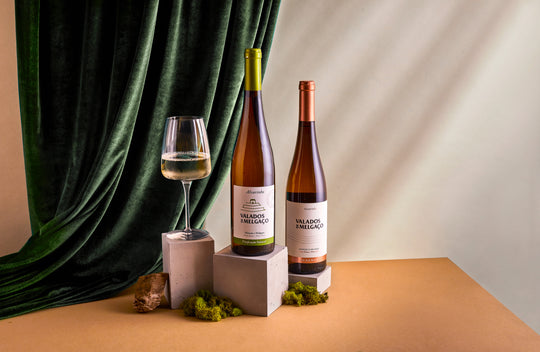Overview
VIEW RECORDED CLASS BELOW:
The undiscovered Bolivian wine world, a SommClass by wine and spirits expert and beverage director of Gustu Restaurant, Bertil Tøttenborg. First, what is Gustu? Its a quechua word for flavour, and a restaurant and bar placed in La Paz, Bolivia, which opened in April 2012. Gustu is under the management of Head Chef Marsia Taha. It is considered among South America's 50 best restaurants, landing the number 32 spot on The Latin America’s 50 Best Restaurants 2014 and the number 14 spot in 2017. Until very recently I had no idea that Bolivia was a wine-producing country; too close to the equator and therefore surely too hot I assumed! Then, over Easter this year, I had the amazing opportunity to visit its different wine regions – and I was seriously surprised at this little known country’s exciting wines!
Why should we take any interest in far-off Bolivia?
For a start, Bolivia is the only wine region in the world where you can visit a good quality vineyard in the morning and a coffee plantation in the afternoon! The country has 4 wine regions, and its most northerly – Samaipata – is not only on the border of the Amazon rainforest, but also on the very edge of cool climate seasonality. Any further north than this and the climate becomes tropical, with temperatures too warm all year round to grow grapes, whereas coffee beans thrive. Bolivia has some of the highest altitude vineyards in the world! Her biggest and best wine region, the “Central Valley”, lies in the “foothills” of the Andes around the town of Tarija in the south of the country, at altitudes between 1600 – 2250mts. Only Salta, roughly 300kms south and just across the border into Argentina, has higher vineyards than this anywhere else in the world. These high altitude vineyards are essential at this latitude – Tarija lies just south of the Tropic of Capricorn – because the nights are cool and daytime temperatures rarely rise above 35C. They produce red wines with powerful aromatics and immense fruit concentration, combined with a welcoming freshness.
Why should we take any interest in far-off Bolivia?
For a start, Bolivia is the only wine region in the world where you can visit a good quality vineyard in the morning and a coffee plantation in the afternoon! The country has 4 wine regions, and its most northerly – Samaipata – is not only on the border of the Amazon rainforest, but also on the very edge of cool climate seasonality. Any further north than this and the climate becomes tropical, with temperatures too warm all year round to grow grapes, whereas coffee beans thrive. Bolivia has some of the highest altitude vineyards in the world! Her biggest and best wine region, the “Central Valley”, lies in the “foothills” of the Andes around the town of Tarija in the south of the country, at altitudes between 1600 – 2250mts. Only Salta, roughly 300kms south and just across the border into Argentina, has higher vineyards than this anywhere else in the world. These high altitude vineyards are essential at this latitude – Tarija lies just south of the Tropic of Capricorn – because the nights are cool and daytime temperatures rarely rise above 35C. They produce red wines with powerful aromatics and immense fruit concentration, combined with a welcoming freshness.
Attend SommClass with Bertil Tøttenborgfrom GUSTU LA PAZ
What's This Class About?
What is Bolivian wine and why is it so different.
Bolivia’s wine culture.
How do Bolivians appreciate wine?
The various types of Bolivian wine style
A Bolivian wine producer’s work motivation and passion.
Indigenous Grape varietals of Bolivia
What you’ll typically find, what works and what doesn’t work in Bolivia’s wine region
Bolivian wine signatures – from classicist to modernist
How far can Bolivia reach as a wine producing country?
Why take this SommClass?
WHERE IS THE BOLIVIAN WINE REGION?
Bolivia's wine industry is based in the southern city of Tarija, near the southern border with Argentina. This region has long produced small amounts of artisanal wine, as well as the distilled grape-based spirit known as singani, the national drink. ... Bolivian wine is exotic. We are a high-altitude wine.
HEIGHT OF THE VINEYARDS (METERS)
1,600 to 3,000 100% of the vineyards are at high altitude
HECTARES OF VINEYARDS
3,000 100% harvested by hand
NUMBER OF WINERIES
65 Producing wines of altitude
GRAN PATRONO
The first Marselan wine produced in Bolivia With the name of “GRAN PATRONO” the first Marselan variety wine produced in Bolivia is launched to the national market. The Marselan strain is used for the production of high-end red wines.
WHAT IS GUSTO RESTAURANT ?
One of the worlds 50 best restaurants. Gustu, the quechua word for flavour, is a restaurant and bar placed in La Paz, Bolivia, which opened in April 2012. Gustu is under the management of Head Chef Marsia Taha.





















